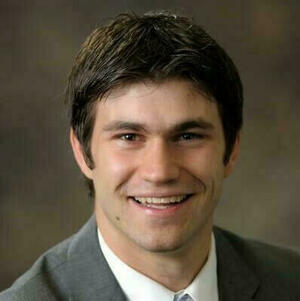Faculty Luncheon: "Atomic force microscopy characterization for energy technologies" by Matthew R. Rosenberger

ND Energy Faculty Luncheon Seminars are held monthly with interested faculty to facilitate cross-disciplinary research collaborations and to enable development of proposal ideas for upcoming funding opportunities. All interested faculty from diverse fields are invited to attend.
The discussion topic for this luncheon will be centered around a presentation by Prof. Matthew R. Rosenberger on "Atomic force microscopy characterization for energy technologies."
This 35-40 minute talk will be followed by discussion with Prof. Rosenberger focused on (1) cross-disciplinary basic research needs, (2) potential avenues for external and internal collaborations, (3) funding sources to target, and if everyone is agreeable, (4) 'follow-up actions' that we can track. With all the faculty engaging in the discussion part of this luncheon after the talk, we expect to have a very stimulating and inspiring exchange of ideas.
For more information on the ND Energy Faculty Luncheon Seminars, contact Subhash L. Shinde at sshinde@nd.edu.
Abstract
Energy conversion, transport, and storage processes often occur at or near the surface of materials, which make surface behavior and surface/environment interactions an integral part of energy technologies. Some examples of these processes include ion intercalation into and out of battery electrodes, catalytic conversion of CO2 into fuels, and charge carrier generation and transport in thin film photovoltaics. My research group will specialize in the use of atomic force microscopy (AFM) techniques to characterize nanometer-scale variations in surface (and near-surface) properties in order to understand various energy processes that occur within materials. Specifically, we will use AFM to measure local mechanical, electronic, and thermal properties in response to various stimuli, such as light, electrical bias, heating, and different gas/liquid environments. We will subsequently correlate this nanoscale information with device-level performance characteristics. In addition to understanding the impact of nanoscale properties on material and device performance, we will engineer surface properties through a combination of defect and strain engineering. Defects and strain can have a significant impact on the electronic band structure of materials and the intentional introduction of defects and strain can be leveraged to improve performance. One material type of particular focus in my group will be two-dimensional layered materials, which may offer advantages over existing technology in certain energy applications, such as electrochemical energy storage and electrocatalysis.